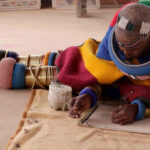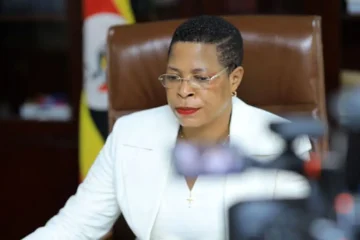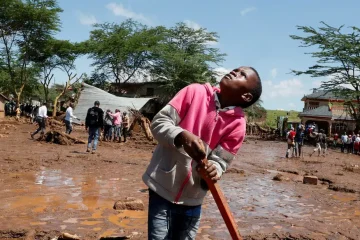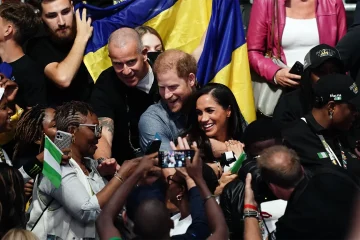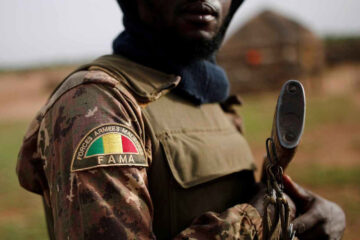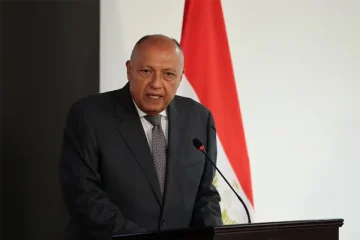[tta_listen_btn listen_text=”Audio” pause_text=”Pause” resume_text=”Resume” replay_text=”Replay”]
LEBANI Sirenje is sitting on a rooftop on Auret Street in Maboneng, Johannesburg. Every few seconds he glances at a picture of the late South African rapper and dancer, Costa Titch – then translates what he sees onto canvas. His brush strokes move in sync with the beat of the AmaPiano house music searing the calm of a Sunday afternoon.
The song on the speakers changes – a faster tune now – but Sirenje’s rhythmic strokes remain unchanged as he works on the painting. Sirenje, popularly known as Rasta The Artist, is famous for painting portraits of public figures who have died.
This is just one scene on the set of a Hillbrow Radio open mic session show, a platform that seeks to give talented and up-and-coming artists from Johannesburg and surrounding areas a chance to showcase what they can do on stage while deepening the camaraderie among the artists.
“I chose to do a portrait of Costa Tich live on this event not only as a condolences gesture to his family and fans but also to symbolize the continuity of Costa Titch’s work through the young artists who would be performing on stage,” said Sirenje, referring to other artists performing live during the session.
“The open mic session is unique because it fuses different art forms like visual arts and performing art forms for unity as a common cause. This is particularly important in a community like Johannesburg innercity which melting pot of different cultures because art is a universal language that cuts across different cultures,” added the Zimbabwean artist.
This open mic session is just one of Hillbrow Radio’s community initiatives.
The station regularly holds events, including sporting tournaments, modelling contests, and other activities where artists, musicians, poets, stand-up comedians, dancers, sports personalities, and community leaders gather to perform and address human rights and community-related issues.
Bongani Mkhwananzi, a listener of Hillbrow Radio and the spokesperson for ZimCommunity in SA, a non-profit, says he has known Hillbrow Radio since 2020 when the COVID-19 lockdown began.
“I got to know about the station because they were helping people who had been evicted from their flats and were assisting while helping in the food distribution programs for the community. The work they are doing now is important, especially for this community (from other African countries) that often feels unwanted in South Africa and yet cannot return to their home countries because of different reasons, including socio-economic factors.
It is important to remember that when people migrate, their lives cannot and do not stop, so programs that keep them in touch with each other like this are important,” he said.
This community media approach comes at a time when calls are growing for the reconceptualization of journalism and media practice and to recognize the importance of context in defining, directing, and determining journalism’s role in society.
This approach, therefore, challenges the narrative that African and global South media practitioners can only think and implement ideas within the Western-oriented or universalized journalism standards of the media.
Siyanda Zokoza, one of the station’s directors, says they are aware of how they are “unusually” going about things, emphasizing that this was the whole point in their efforts to address issues like poverty, homelessness, crime, drug and substance abuse, high unemployment rates, and gender-based violence.
“We are very much cognisant of the fact that how we run this station, interact with our audiences, and engage with our community is not what you would find prescribed in most media textbooks. But that does not bother us at all. We… stretch the boundaries of community media practice because we strive to be unique and distinct from any other community media.
“Most of the projects we run even come at our personal cost, but we do not mind that at all because we believe in uplifting humanity by all means necessary regardless of gender, age, socio-economic status, political affiliation, or even nationality,” he said.
These events have also left quite an impression on a rap artist and participant, Mlungigsi’ Mlue Jay’ Moyo.
“A big thank you goes to Hillbrow Radio for giving us a platform to perform. We could be doing drugs, but because we now have a hub where everyone wants to be there to watch us showcase our talents, we get to be disciplined to focus on our crafts. Some artists are still young and upcoming, but we can all learn from each other,” he said.
Khanyile Mlotshwa, a media researcher, believes that Hillbrow Radio exemplifies how a “decolonised” media can work to benefit communities, if applied well.
“I believe the practices that Hillbrow Radio is involved in are decolonial in that they are a departure from the objective journalism practice, which says a person cannot be involved with their sources or the community in which they operate. They are a clear indication that the media must be in the service of the community,” he said.
Franz Kruger, a veteran journalism professional, trainer and researcher, said this approach to community media “seems exciting” and is “a very useful way of building community relationships, especially in the Johannesburg inner-city with marginalized audiences.”
While it cannot be disputed that there are common elements of journalism and media practice, like truthfulness, that are universal, it should be equally acknowledged that the realities of the local context also have a strong bearing on media practice.
Creative communication strategies involving art and sports events should be encouraged and emulated if community and social development are realized in the global South through community media enterprises.
While there may be others doing this type of work in South Africa, very few, if any, get the recognition they deserve for prioritizing their community needs in such a creative fashion.




